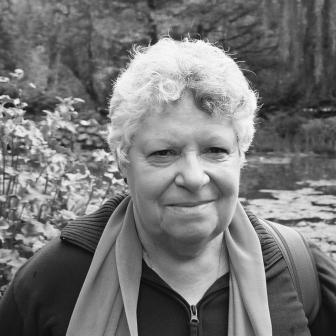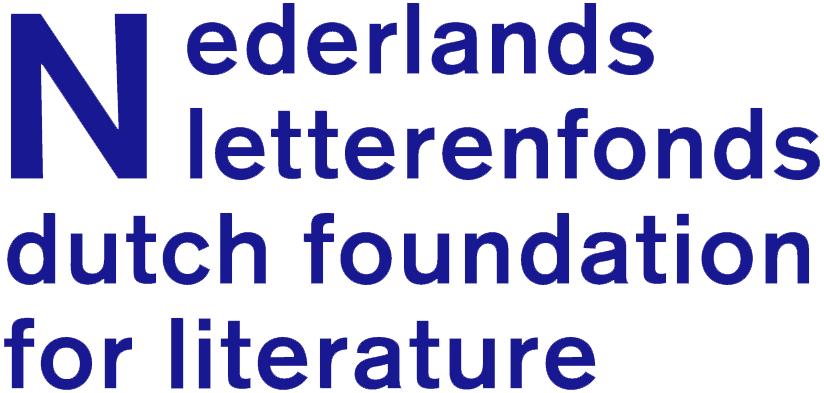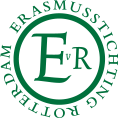Article
Portuguese Surrealism
Welcome to Portuguese poetry - July 2005

January 18, 2006
Portuguese Surrealism got going in 1947, when a small group of Lisbon artists and writers, including Cesariny and Alexandre O’Neill (1924-86), began meeting to discuss French Surrealism – as promulgated in André Breton’s manifestos and chronicled in Maurice Nadeau’s Histoire du Surréalisme (1945) – and to try out several of its methods for creating without relying on reason: the cadavre éxquis (a composition by any number of co-authors, each of whom writes a word or phrase without seeing but a fraction of what the previous co-author wrote) and automatic writing. These and other methods, with their visual art equivalents, aimed at producing, if possible, works of art and literature directly out of the unconscious.
Even before they delved into French Surrealism (founded already in the mid-1920s but ignored for several decades in Salazarist Portugal), Cesariny and his friends had arrived at its Dadaistic spirit of iconoclasm and distrust of the rational. Violently opposed to any artistic expression associated with the political regime, they also fell out of sympathy with the prevailing school of opposition: Neo-Realism, whose economically determined socialist aesthetic had little room for the vagaries of a free-ranging imagination.
Cesariny traveled to Paris and met Breton in 1947, but the Grupo Surrealista de Lisboa had no official ties with its French prototype. In August of 1948 Cesariny and some of his friends broke with the Grupo Surrealista, which would organize an art exhibition in 1949 and publish five issues of a magazine before disbanding, in 1950. The splinter group, led by Cesariny and known as the Grupo Dissidente, or simply Os Surrealistas, promoted several exhibitions, published manifestos and organized conferences until the early 1950s, when it too dispersed. But writers and artists identifying themselves with Surrealism continued to meet in Lisbon cafés and to promote its doctrine until the early1960s.
That doctrine was perhaps best expressed in a ‘communiqué’ of the Portuguese Surrealists written in 1950 but not published till much later. It reads, in part: “Man will only be free when he has destroyed any and every kind of political-religious or religious-political dictatorship and when he is universally capable of existing without limits. Then Man will be Poet and poetry will be Explosive Love. (…) Our last word to country, church and state will always be SHIT.”
In their struggle against socially imposed limits, the Portuguese Surrealists tried to bring art out of its isolation, to make it part and parcel of life. The ‘purest’ among them weren’t concerned to produce works of art for posterity but to live imaginatively, artistically, to integrate the human creative faculty into daily living. Freedom was the catchword that informed their work generally and their poetry most especially. Thematically this meant bitter opposition – through mockery, sarcasm and grotesque parody – to the repressive political regime and to a perceived smallness of the national spirit that allowed that regime to hold sway. Technically their poetry was characterized by free associations, seemingly irrational leaps, word plays, borrowings from other authors (sometimes placed in quotation marks), extravagant imagery and metaphors, and an occasionally transgressive syntax.
The two authors presented here produced the most significant bodies of poetry among the Portuguese Surrealists. But Mário Cesariny quit writing poetry many years ago, dedicating himself instead to painting, and Alexandre O’Neill dissociated himself from the movement already in 1951, almost at the beginning of his publishing career. Traits associated with Surrealism abound in O’Neill’s subsequent work, but we can wonder if they might have been there anyway, even if the movement had never existed.
In an interview published in 1982, Cesariny stated: “Surrealism was an invitation to poetry, love, freedom, personal imagination. Surrealism brought together Romanticism, Symbolism, Futurism, libertarian traditions and other movements, and gave them a meaning. That meaning isn’t going to disappear. What was called Surrealism has always existed.” {id="4638" title="Who’s behind the Portuguese magazine?"}
Did a true Surrealist Movement exist in Portugal? Even those who are reputed to be its leaders have disagreed on this point. The most enduring and prolific of Portugal’s Surrealists, Mário Cesariny de Vasconcelos (b. 1923), prefers to speak of a Surrealist ‘intervention’ in his country’s art, literature and society.
The Portuguese version of Surrealism was far more modest than the French original after which it was modeled, but it was inwardly and passionately felt by its practitioners – it wasn’t just a cheap copy – and had a profound influence on art and poetry. Perfecto E. Cuadrado, one of the most dedicated scholars on the subject, convincingly argues that it had the characteristics of a genuine avant-garde movement, with an organized structure, publications, doctrinal statements and public manifestations. In this formal sense the movement was short-lived, but it has survived as an attitude still discernible in certain poets, such as {id="4650" title="Herberto Helder"}.Portuguese Surrealism got going in 1947, when a small group of Lisbon artists and writers, including Cesariny and Alexandre O’Neill (1924-86), began meeting to discuss French Surrealism – as promulgated in André Breton’s manifestos and chronicled in Maurice Nadeau’s Histoire du Surréalisme (1945) – and to try out several of its methods for creating without relying on reason: the cadavre éxquis (a composition by any number of co-authors, each of whom writes a word or phrase without seeing but a fraction of what the previous co-author wrote) and automatic writing. These and other methods, with their visual art equivalents, aimed at producing, if possible, works of art and literature directly out of the unconscious.
Even before they delved into French Surrealism (founded already in the mid-1920s but ignored for several decades in Salazarist Portugal), Cesariny and his friends had arrived at its Dadaistic spirit of iconoclasm and distrust of the rational. Violently opposed to any artistic expression associated with the political regime, they also fell out of sympathy with the prevailing school of opposition: Neo-Realism, whose economically determined socialist aesthetic had little room for the vagaries of a free-ranging imagination.
Cesariny traveled to Paris and met Breton in 1947, but the Grupo Surrealista de Lisboa had no official ties with its French prototype. In August of 1948 Cesariny and some of his friends broke with the Grupo Surrealista, which would organize an art exhibition in 1949 and publish five issues of a magazine before disbanding, in 1950. The splinter group, led by Cesariny and known as the Grupo Dissidente, or simply Os Surrealistas, promoted several exhibitions, published manifestos and organized conferences until the early 1950s, when it too dispersed. But writers and artists identifying themselves with Surrealism continued to meet in Lisbon cafés and to promote its doctrine until the early1960s.
That doctrine was perhaps best expressed in a ‘communiqué’ of the Portuguese Surrealists written in 1950 but not published till much later. It reads, in part: “Man will only be free when he has destroyed any and every kind of political-religious or religious-political dictatorship and when he is universally capable of existing without limits. Then Man will be Poet and poetry will be Explosive Love. (…) Our last word to country, church and state will always be SHIT.”
In their struggle against socially imposed limits, the Portuguese Surrealists tried to bring art out of its isolation, to make it part and parcel of life. The ‘purest’ among them weren’t concerned to produce works of art for posterity but to live imaginatively, artistically, to integrate the human creative faculty into daily living. Freedom was the catchword that informed their work generally and their poetry most especially. Thematically this meant bitter opposition – through mockery, sarcasm and grotesque parody – to the repressive political regime and to a perceived smallness of the national spirit that allowed that regime to hold sway. Technically their poetry was characterized by free associations, seemingly irrational leaps, word plays, borrowings from other authors (sometimes placed in quotation marks), extravagant imagery and metaphors, and an occasionally transgressive syntax.
The two authors presented here produced the most significant bodies of poetry among the Portuguese Surrealists. But Mário Cesariny quit writing poetry many years ago, dedicating himself instead to painting, and Alexandre O’Neill dissociated himself from the movement already in 1951, almost at the beginning of his publishing career. Traits associated with Surrealism abound in O’Neill’s subsequent work, but we can wonder if they might have been there anyway, even if the movement had never existed.
In an interview published in 1982, Cesariny stated: “Surrealism was an invitation to poetry, love, freedom, personal imagination. Surrealism brought together Romanticism, Symbolism, Futurism, libertarian traditions and other movements, and gave them a meaning. That meaning isn’t going to disappear. What was called Surrealism has always existed.” {id="4638" title="Who’s behind the Portuguese magazine?"}
© Richard Zenith
Sponsors
























